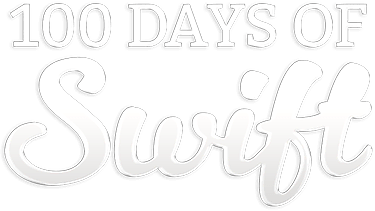
DAY 7
Closures, part two
Yesterday you learned the basics of closures, but today things get a little trickier. But that’s OK: Benjamin Franklin once said, “energy and persistence conquer all things” – you can do this!
Sometimes closure syntax can be a bit hard on your eyes. If you find it a bit overwhelming – if you’re staring at some code and aren’t 100% sure of what it means – just go back one video and watch it again.
Today you have seven one-minute videos to watch, and you’ll learn about how closures accept parameters and return values. Once you’ve completed each video you can go over any optional reading if you need it, then take a short test to help make sure you’ve understood what was taught.
To make things a little less intimidating, I’ve split up today’s topics into two sections: the least you need to know to continue, and more advanced topics that will really develop your learning. Keep in mind that I’ve already said closures are hard, so I hope you can appreciate that more advanced closures are doubly hard – don’t feel bad if you try the more advanced topics and think you’ve had enough and want to move on!
The least you need to know
- Using closures as parameters when they accept parameters
- Using closures as parameters when they return values
- Shorthand parameter names
If you make it through those, you’re most of the way to understanding how closures are used in Swift and why they are important. However, if you want to see more advanced usages of closures you’re welcome to press on!
Advanced closures
- Closures with multiple parameters
- Returning closures from functions
- Optional: Returning closures from functions
- Test: Returning closures from functions
- Capturing values
- Optional: Why do Swift’s closures capture values?
- Test: Capturing values
- Closures summary
- Test: Closures
Remember, stay accountable: tell the world that you’ve just learned all about closures in Swift, and discuss them with others who are learning too.
Need help? Tweet me @twostraws!

SPONSORED Take the pain out of configuring and testing your paywalls. RevenueCat's Paywalls allow you to remotely configure your entire paywall view without any code changes or app updates.
Sponsor Hacking with Swift and reach the world's largest Swift community!
100 Days of Swift
The 100 Days of Swift is a free collection of videos, tutorials, tests, and more to help you learn Swift faster. Click here to learn more, or watch the video below.
